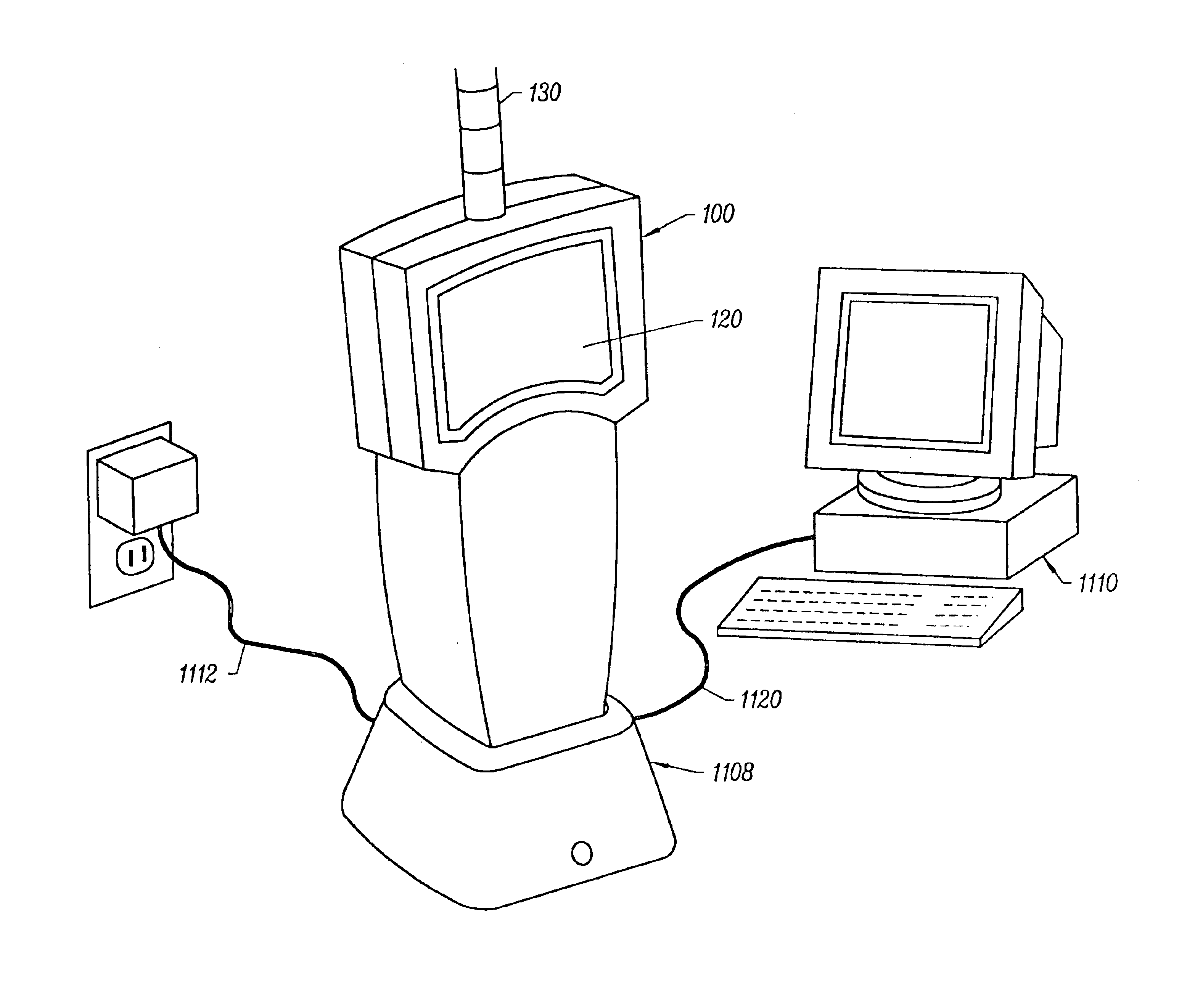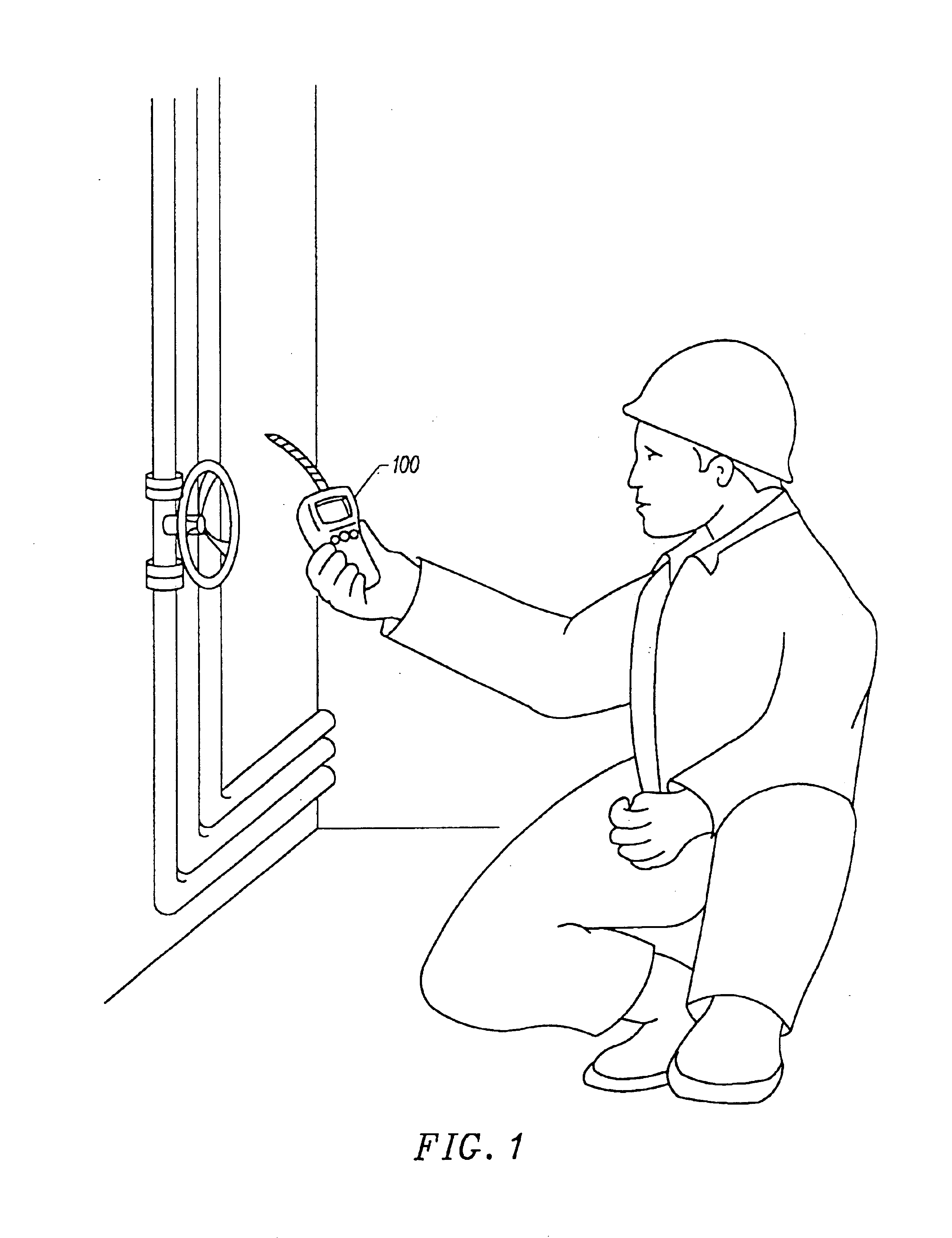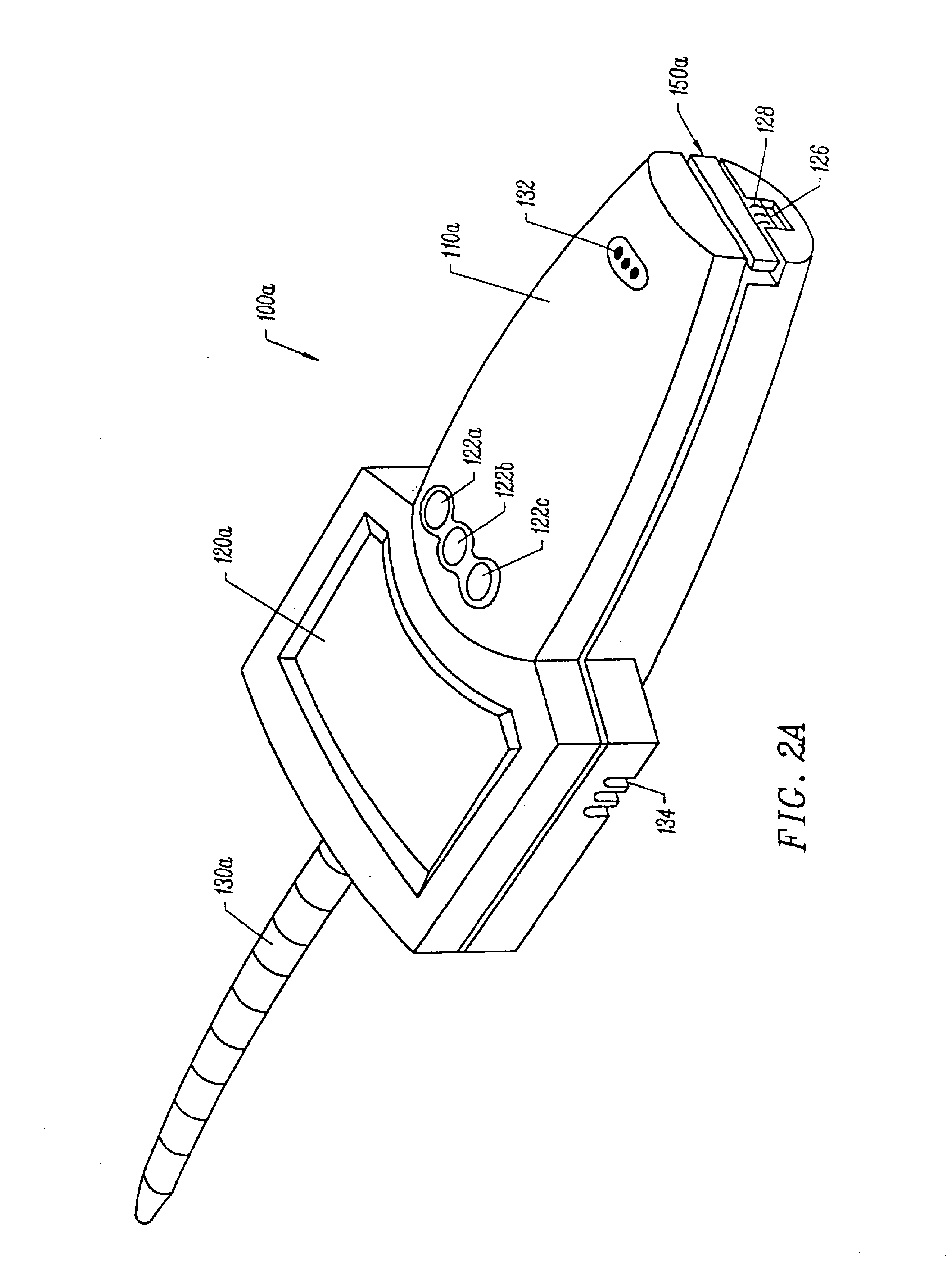Apparatus, systems and methods for detecting and transmitting sensory data over a computer network
a computer network and sensory data technology, applied in the field of sensory data detection and transmission, can solve the problems of large, cumbersome laboratory models that cannot be used in the field and pilot plant applications, and the portable chemical detectors that have been developed so far have many limitations, and achieve the effects of enhancing performance, reducing cost, and increasing utility
- Summary
- Abstract
- Description
- Claims
- Application Information
AI Technical Summary
Benefits of technology
Problems solved by technology
Method used
Image
Examples
Embodiment Construction
[0041]FIG. 10 shows various accessories for the e-nose device;
[0042]FIG. 11 shows a perspective view of an e-nose device shown mounted vertically in an electrical charging station and coupled to a host computer;
[0043]FIG. 12A shows a diagram of an embodiment of the electrical circuitry within the e-nose device;
[0044]FIG. 12B shows an embodiment of a voltage divider network used to measure the resistance of a chemically sensitive resistor;
[0045]FIG. 12C shows a diagram of another embodiment of the electrical circuitry within the e-nose device;
[0046]FIGS. 13A through 13G show an embodiment of suitable flowcharts of the functional steps performed by the e-nose device in implementing the measurement and analysis procedures;
[0047]FIGS. 14A through 14C show a diagram of an embodiment of the menu selection for the e-nose device;
[0048]FIG. 15 shows a graph of a principal component analysis of the responses to a series of esters using the handheld apparatus of the present invention;
[0049]FIG...
PUM
| Property | Measurement | Unit |
|---|---|---|
| length | aaaaa | aaaaa |
| length | aaaaa | aaaaa |
| size | aaaaa | aaaaa |
Abstract
Description
Claims
Application Information
 Login to View More
Login to View More - R&D
- Intellectual Property
- Life Sciences
- Materials
- Tech Scout
- Unparalleled Data Quality
- Higher Quality Content
- 60% Fewer Hallucinations
Browse by: Latest US Patents, China's latest patents, Technical Efficacy Thesaurus, Application Domain, Technology Topic, Popular Technical Reports.
© 2025 PatSnap. All rights reserved.Legal|Privacy policy|Modern Slavery Act Transparency Statement|Sitemap|About US| Contact US: help@patsnap.com



